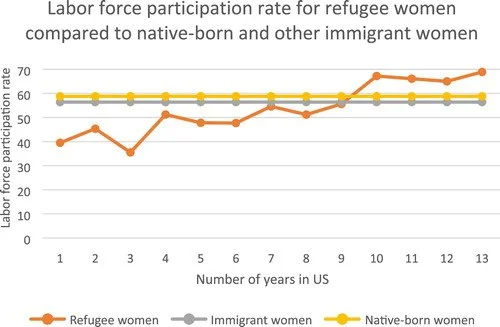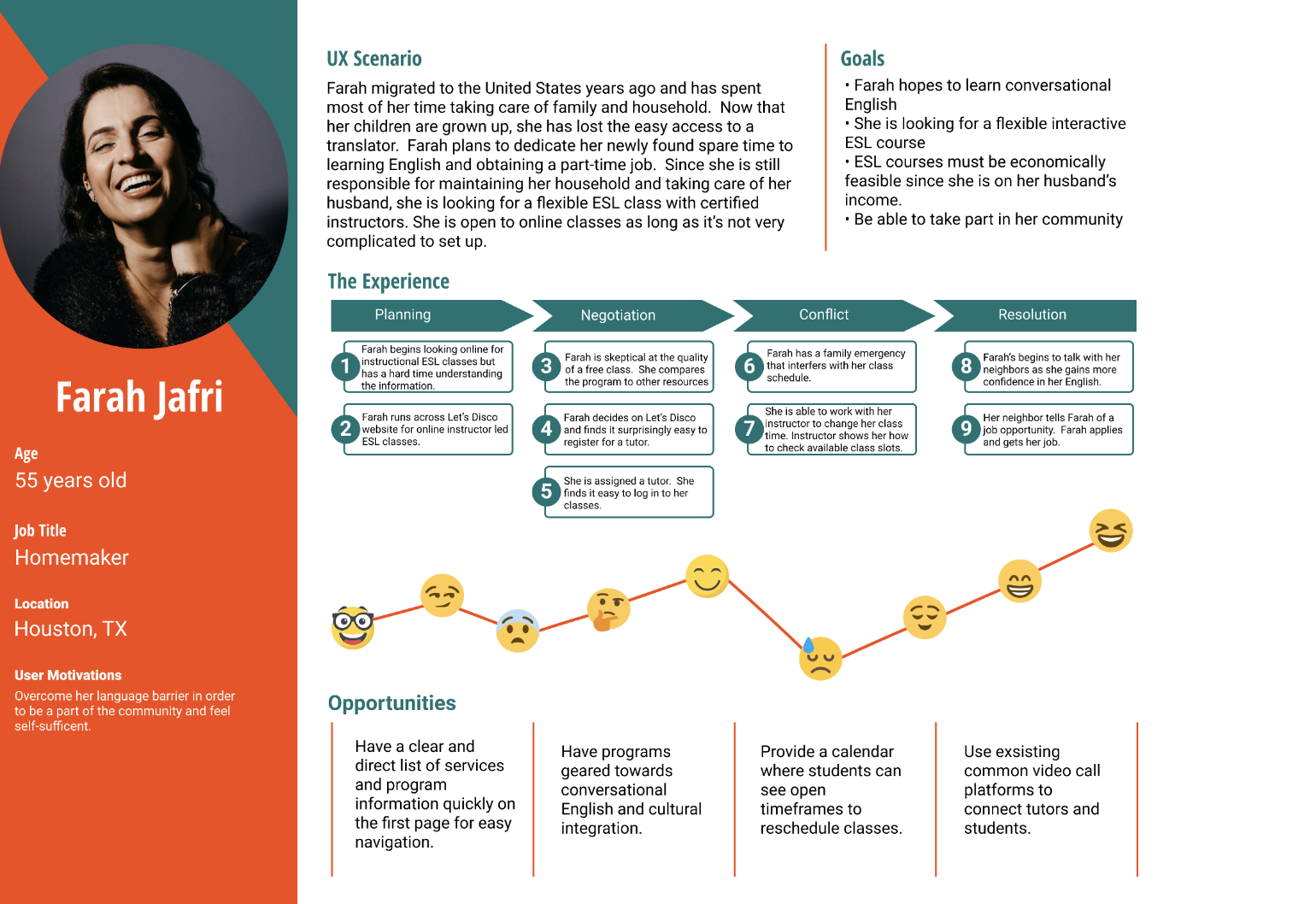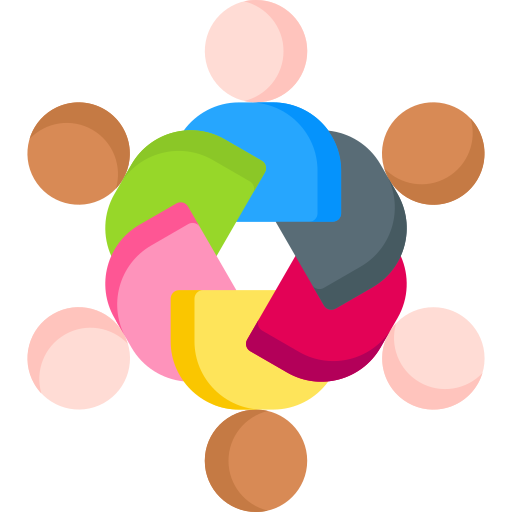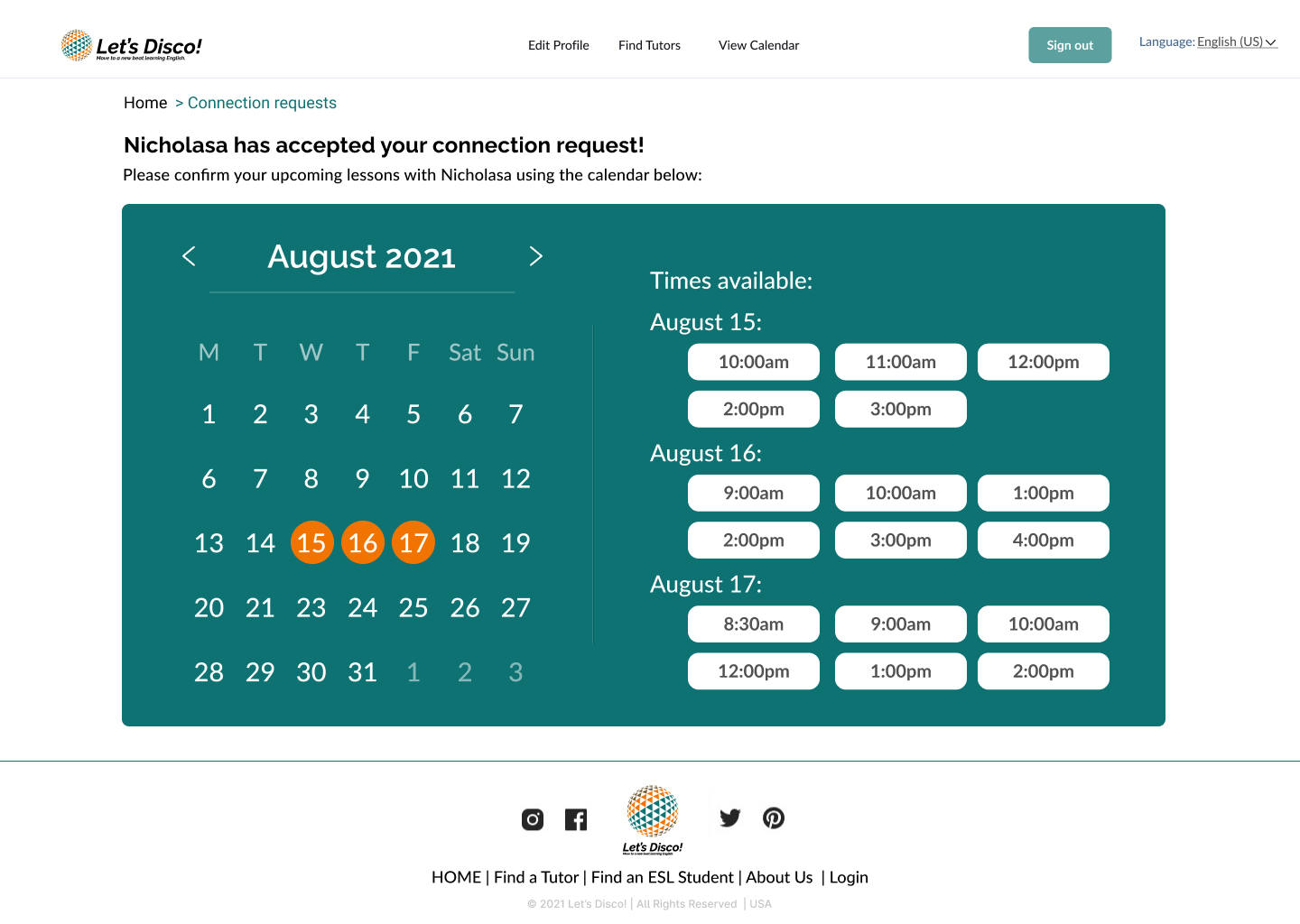It’s not always easy for immigrants to learn English or adapt to the US.
And if you’re a refugee fleeing conflict, you may not have had time to prepare for it all. A welcoming, empowering online platform specifically built for refugee women to find remote ESL tutors might ease the transitioning.
Why is it important to have a space like this?
Language barriers present a formidable challenge for refugees migrating to the United States. Refugees may arrive in the United States with limited or no proficiency in English, hindering their ability to communicate effectively and integrate into their new communities. This linguistic barrier not only affects day-to-day interactions and social connections, but also makes it difficult to access crucial resources, such as healthcare, education, and employment opportunities.
Refugee women, who make up 50% of all refugees worldwide, often face additional challenges such as gender-based discrimination, exploitation, and childcare that can increase barriers to English proficiency. They often have to stay home and take care of their families, making it difficult to attend English lessons.
As a result, the need for accessible, remote English as a Second Language (ESL) education with tutors understanding of their backgrounds becomes paramount for building new, safe, secure, and thriving lives where they’re aware of their rights and be a part of a community.
With learning on a digital platform, the refugees do not need to leave the home where they may have to encounter further language barriers.
Project overview
Built for: The Expat Woman’s all-female hackathon
My role: UI designer
Duration: 2 weeks in May 2021
Tools used:
Getting to know our users
It turned out that most members of my 6-person team had some work or volunteering experience supporting immigrant and/or refugee women in the past, including myself back when I volunteered at a nonprofit for Central American refugee women who were facing domestic violence. We were able to rely on that experience to power our research and insights for this project. However, it’s really important to not let your own experiences define how a product should be designed, so we proceeded with some quick primary and secondary research.
Primary research: One of our team members had a strong network of several refugee women from all over the world. Four of us researched the challenges refugee women face in integrating in the US and learning English. Two other team members collaborated in interviewing six refugee women. We put all these findings together on an affinity map.
Since our time to conduct primary research was limited, we primarily depended on secondary research online, expanding our search to “immigrant women” in general as data on refugee women is relatively limited.
Click to expand photo
Key findings from our original research
More than half of our participants emphasized:
A lack of time fitting English classes in their schedules due to the responsibilities of juggling childcare and work
50% of immigrant women don’t leave their home for the first 6 months after immigrating
⬅️ Refugee women are typically fleeing political conflicts from a wide variety of countries (see table)
Refugee women often lag behind refugee men in learning English
Costs, excessive responsibilities, and illiteracy can sometimes hinder learning English for refugee women
Sometimes refugees do not have enough contact with native English speakers making it hard to practice sufficiently
Quality personal relationships between the women and teachers were valuable and motivational
Refugees often have their educations interrupted by violence, war, poverty, and other factors causing them to flee, which can disrupt their English education as well
⬅️ Refugee women tend to participate less in the labor force compared to US-born and other immigrant women (see graph)
73% of refugee women experienced increased domestic violence during COVID-19
Notable things we learned about the English-learning journey of refugee women
Update as of 2024: I think we should have asked many more questions on the women’s experiences learning English in-person and online, as well as what they seek out in an ESL tutor.
💡
The necessity of learning English to better understand laws, employment, communities, and local culture
Feeling homesick, struggling to connect with their new environment
A preference to learn English with a tutor so they can be guided and corrected
A more in-depth look at our users and their journeys
We stepped into our users’ shoes for a while, walking through their struggles, hopes, goals, and barriers to learning English. Here’s one of our personas and her user journey:
The objectives
A lively yet comforting, warm design that makes it easy to find a tutor with the right qualifications and background. Scheduling needs to be a simple and flexible experience with easy cancellation.
An inclusive, empowering user experience that welcomes very diverse cultural backgrounds, including users not well-versed with technology.
⚠️ Important note: Since immigrants already face some discrimination in the US for not speaking English well, it’s critical that the design does NOT further reinforce stigma against not knowing English. It should not perpetuate any shame for missing lessons, not performing well, or not being active. This stands in contrast to Duolingo, whose user experience has been criticized for being unusually pushy towards users.
Enhancing the user journey with the right colors, imagery, and tone
We decided that our interface would embody an uplifting, bright, joyful, and hopeful energy and experience while still being somewhat gentle enough to be comforting. A semi-bright color palette that isn’t too glaring would fit.
We used the image on the right as inspiration for our vivacious color scheme.
To keep up with the comforting, uplifting theme, we decided to call our platform Let’s Disco. You already know what “disco” popularly refers to in everyday life, but it also means learning in Latin!
In our project name, “disco” serves as a double-entendre to convey both learning and liveliness.
We decided to balance out the bright colors by featuring imagery of the white poppy, which is a feminine-presenting symbol of peace representing a commitment to non-violence and a world free from conflict.
For refugee women who have fled conflict-ridden regions, the white poppy serves as a symbol of hope and resilience. Its presence on our site can convey a message of solidarity, acknowledging the collective desire for a peaceful future and the pursuit of education and empowerment as pathways to healing.
Other symbols we considered was the white dove, the Flower of Life emblem, and paper cranes.
The mockups
We wanted the site’s purpose to be immediately clear and welcoming ➡️
From our interviews, we thought it was important to mention learning safely at home on a flexible schedule since scheduling was a concern for our participants ➡️
Our participants emphasized the tutor’s certified background, so we made it clear our ESL tutors are vetted and certified ➡️
Update as of 2024: I would have written the copy here to sound warmer, conveying more solidarity in an emotionally engaging manner rather in a plain matter-of-fact manner depicted here.
💡
It’s really important that the tutors have a space to describe themselves so the users can get a glimpse of their personalities and their familiarity with issues refugees often face. On their end, tutor users will be prompted to enter their experience working with refugees and how they keep their lessons engaging, such as particularly unique, dynamic ways of immersion ➡️
⬅️ Our online research indicates that cultural competency in a tutor would also be important, hence mentioning their experience in multicultural environments
⬅️ Since refugees come from many countries, it’s important that the website can be translated into several languages and the user can easily search tutors by languages spoken
Note: one of the first steps for a user to creating their new free account would be selecting the language they speak, thus setting the language for the overall site. They can change it in the right corner.
⬅️ One of our research insights is that precise scheduling would be important to our users, so we presented our instructors’ availability in clear slots similar to a typical calendar scheduling app
Update as of 2024: As mentioned before, I would have conducted more research on the refugee women’s previous use of online ESL platforms and what they seek out most in a platform. That way, I would be able to add more useful filters and more advanced methods of searching for the right tutors.
Since scheduling and instructor background was a key concern for our participants, we added clear ratings and current weekly availability as reported by the tutors ➡️
Update as of 2024: Asking more thorough questions to our participants and conducting more research on what English learners typically seek in an ESL tutor would have helped us with better information architecture of this page. For example, tutor profiles could feature what platforms the tutor uses and what parts of English they specialize in.
💡
💡
Hypothetical future considerations
If we were to build out every screen of this product, a few more features it would include are:
A section on a page that describes the benefits of learning English
Another section describing how Let’s Disco vets its tutors, describing what we look for in tutors who are empathetic and understanding of common refugee challenges
A dashboard for the user to keep track of her English classes, feedback, and overall progress
In-app features to practice reading and writing English, such as a feature for the tutor to assign homework digitally
More visual symbols of peace featured throughout the site
A mobile version with push notifications that remind the user to practice English (again, not in a mean way like Duolingo)
[Internal] A design system featuring more symbols of peace























